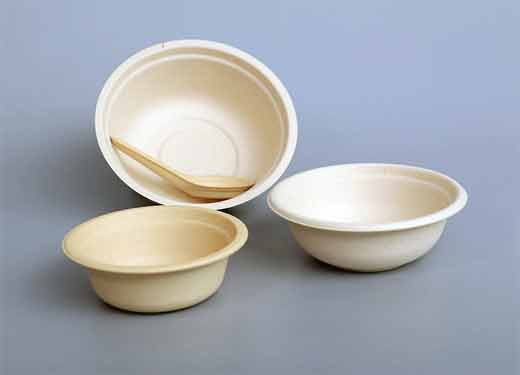Definition of Pulp Molding Tableware Machine
Pulp molding tableware machines are specialized equipment used for the production of eco-friendly and biodegradable tableware. These machines use pulp fibers from waste paper, such as cardboard and newspaper, as their primary raw material, making them an environmentally sustainable alternative to traditional plastic and foam tableware.
Pulp molding technology involves the use of a mold, which is filled with a mixture of water and paper pulp. The mold is then pressed and dried to form the desired shape. The process is widely used in the production of egg trays, fruit trays, and other paper-based products.
Benefits of Using Pulp Molding Tableware Machine
- Environmental Sustainability One of the primary benefits of using pulp molding tableware machines is their environmental sustainability. The machines use waste paper as their primary raw material, which reduces the amount of waste in landfills and contributes to the conservation of natural resources.
- Cost-Effectiveness Pulp molding tableware machines are also cost-effective in the long run. Since they use waste paper as their primary raw material, the cost of production is significantly lower than traditional tableware production methods.
- Versatility in Tableware Production Pulp molding tableware machines are versatile in tableware production. They can produce a wide range of products, including plates, bowls, cups, and cutlery.
- High-Quality End Products Pulp molding tableware machines produce high-quality end products that are durable and resistant to water and oil.
How Pulp Molding Tableware Machines Work
Raw Material Preparation The first step in the pulp molding process is raw material preparation. Waste paper is collected, sorted, and shredded into small pieces. The shredded paper is then mixed with water to form pulp.
Pulp Molding Process
The pulp molding process involves the use of a mold, which is filled with the prepared pulp. The mold is then pressed to remove excess water and shape the pulp. The shaped pulp is then dried and cured to form the desired shape and texture.
Drying and Finishing
Once the products have been formed, they are still wet and need to be dried. This is typically done using a drying oven or a hot press. The drying process removes all excess moisture from the products and makes them ready for finishing.
Finishing refers to the final step in the manufacturing process, where the products are trimmed, cut, or shaped to their final form. The finished products are then packaged and prepared for shipment to the customers.
Environmental Benefits of Pulp Molding Tableware Machines
One of the biggest advantages of pulp molding tableware machines is that they are environmentally friendly. They use natural materials that are biodegradable and compostable, such as paper pulp, bagasse, or wheat straw. These materials are sustainable and do not harm the environment in any way.
Pulp molding tableware machines also reduce waste and promote circular economy. They use waste paper and agricultural residues that would otherwise end up in landfills or be burned. By recycling these materials, pulp molding tableware machines help to reduce the amount of waste that ends up in the environment.
In addition, pulp molding tableware machines are energy-efficient and emit less greenhouse gases compared to traditional manufacturing processes. This means that they have a smaller carbon footprint and contribute less to climate change.
Applications of Pulp Molding Tableware Machines
Pulp molding tableware machines are versatile and can be used to produce a wide range of products. The most common products produced by these machines include:
- Disposable tableware: Plates, bowls, cups, and utensils that are used in restaurants, cafes, and fast-food outlets.
- Egg cartons: Protective packaging for eggs that is made from recycled paper.
- Fruit trays: Trays used to store and transport fruits and vegetables.
- Medical trays: Trays used to hold medical instruments and equipment.
- Electronic packaging: Packaging used to protect electronic devices during shipping and handling.
Factors to Consider When Choosing a Pulp Molding Tableware Machine
When choosing a pulp molding tableware machine, there are several factors to consider, including:
- Production capacity: The machine’s production capacity should match your production needs.
- Customizability: The machine should be customizable to produce different shapes and sizes of products.
- Energy efficiency: The machine should be energy-efficient to minimize operating costs.
- Durability: The machine should be made of high-quality materials and components to ensure durability and longevity.
- Technical support: The manufacturer should provide technical support and after-sales service to ensure that the machine runs smoothly and efficiently.
Pulp molding tableware machines offer many benefits over traditional manufacturing processes. They are environmentally friendly, reduce waste, and are versatile in their applications. When choosing a pulp molding tableware machine, it is important to consider factors such as production capacity, customizability, energy efficiency, durability, and technical support. By selecting the right machine, businesses can increase their efficiency, reduce their environmental impact, and produce high-quality products at a lower cost.
